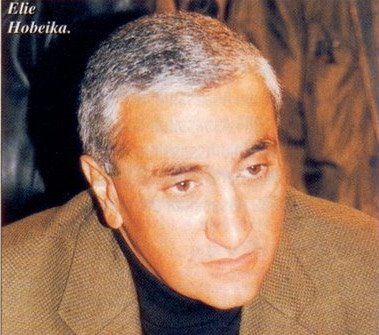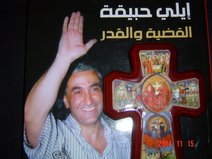
It has been the CIA’s signature strategy for several decades that all of its missions are joint missions, if possible, comprised of black ops forces drawn from various spy and military organizations.
By: Peter Chamberlin
If things were as they seemed, then the most powerful military force that the world has ever seen would have had no trouble defeating Afghan or Iraqi tribes, or the already decimated military of Saddam Hussein. But things are not as they seem on the nightly news; in fact, most things prove to be the exact opposite of how they are portrayed. In a country like America (and sadly, most countries want to be like America), the people prefer to believe whatever they are told.
No one questions now, nor did they at the time these things occurred, why American military forces performed in the following unprofessional, illogical manner—they consistently refused to contain the forces they fought against in any encounter (never closing the back doors) and they always stopped fighting just short of victory, allowing their enemies years to rebuild their forces while American soldiers were restrained from finishing the enemy to become instructors. Continuing the Iraq and Afghan wars was more important than winning or ending them; continuing the wars was “winning” them in the lexicon of the Empire-builders.
In the greatest fraud ever perpetrated upon any force of patriotic fighting men in the history of the human race, over two-million men and women have been sent to fight and die in wars where victory was never possible, by government mandate. This has been a hallmark of America’s wars, set by the first Pres. Bush in his Gulf war. No useful assets like Saddam Hussein (or the Taliban, for that matter) can be eliminated in our wars of conquest. We are only interested in reeling-in those who think that they are beyond control, restoring the balance of power, the balance of terror.
It is imperative that the still free citizens of the world understand that their own leaders consider the continuation of America’s wars more important than anything else in the world right now. Every leader on the world stage has a financial stake in our war, although there is, no doubt, an element of threat in the equation, as well. If we prevail, then their rewards will multiply exponentially. Nothing less can explain how all of them could sell-out their own people for the opportunity to sign deals with the United States, or worse, how they all cover up crimes committed by American agencies.
The American war is not about fighting terror; that is just the most convenient excuse for the many criminal events that our governments have planned for us all. We fight to advance a new American order, one without resistance to the Empire’s designs. Everyone who can go along with these plans and get along (doing as they are told) is guaranteed a better lot in the new order than those who resist. Anyone in the way of those designs is branded an extremist or a “terrorist,” who must be taken out of the way.
The one nation that potentially has more to gain from partnering with the United States than any other compromised nation is India. The economic explosion that India has experienced over the past decade is a direct result of its new partnership with American interests. The globalist “outsourcing” solution has directly transferred millions of jobs and countless industries to India, resulting in an equivalent loss of American jobs. (The same can be said of China—the decades of economic boom it has experienced was a conscious transfer of American jobs and wealth to China—the “Walmart solution.”).
India has special roles to play in the Empire’s plans, on many different levels. Beyond the scientific and economic partnership is the US/India military partnership. This extends beyond the obvious visible manifestations of this partnership to the secret covert level. It is here in the septic tank level of international relations that India is dirtying itself in unbelievable ways, in order to fulfill what is required of it in this partnership. Considering the CIA’s resounding success in persuading ISI men to aid in terror within Pakistan, it is not outrageous to suspect that the same thing is happening inside India.
India and the US are walking a dangerous line, accusing Pakistan for false flag attacks (that were probably their own handiwork), all the while running mercenaries inside Pakistan. If it is proven that the CIA has been running ops against the Indian government, then it is probable that Indians are part of the plan.
Evidence of both adversarial agencies is evident in the person of one captured spy, Daood Gilani, a.k.a. David Headley. Mr. Headley is a known asset of the CIA and the DEA, but he has also been trained by Pakistan’s premier terror outfit, Lashkar e-Taiba. He will be charged for the planning of the Mumbai attack, thus implicating the American government in that attack. In addition, testimony of two of the men captured after the Mumbai attack testimony suggests that Headley was possibly a colonel in one of India’s agencies, or perhaps the Mumbai police force. Will prosecuting Headley for the attack implicate Indian players, possibly drawing-in RAW and the military?
It is difficult to see how India can pursue real leads in their Mumbai investigation (other than their usual anti-Pakistani propaganda) without exposing their own responsibility in that false flag attack upon mostly Indian citizens. Even though US, Israeli and British sources of the attackers are indicated, in addition to the Pakistanis, a central element of the Mumbai attack was the elimination of Hemant Karkare, chief of the Mumbai Anti-Terrorist Squad and his associates, in order to cover-up the Indian hand in previous false-flag attacks against Muslims within India.
The US maintains a delicate balancing act; using India to anchor its Asian operation and to provide an economic boost to its own stability, while the CIA pits RAW and ISI against each other in Pakistan and Afghanistan. In the case of Headley, you have the reverse situation, where Pakistani assets are developed to be used in a “false flag’ attack upon India by a consortium of agencies, which included Indian assets, intended to implicate Pakistan. In Pakistan, you have the same set-up with the TTP, the Pakistani Taliban, where Pakistanis are helping Indians and Americans by hurting other Pakistanis.
It is the contradictions seen in all false flag ops that make them appear absurdly impossible; they are dependent upon key players, “patsies,” committing acts of treason against their own homelands. It is a phenomenon seen in all anti-state agency operations, from the Kennedy assassination to the attack upon Mumbai—the contradictions make them seem impossible, but in reality, it is the inherent contradictions that make “big lie” ops work.
It has been the CIA’s signature strategy for several decades that all of its missions are joint missions, if possible, comprised of black ops forces drawn from various spy and military organizations. The black ops forces that have served on American international missions are known collectively as “al Qaida,” the Base. Since late 2000, the term “al Qaida” has been used to blame attacks upon terrorists associated with Osama bin Laden, although the bulk of the attacks attributed to this militant movement have been the work of the international mercenary/militant CIA forces.
Drafting India and RAW into this exclusive international terrorist order was a brilliant move, that presented the “false flag” think tanks with a wide range of staging opportunities. The destabilizing mission planned for the sub-continent and all of Central Asia required active collaborators in every targeted state, to stage the attacks and battles required to incite war hysteria and to agitate for the revenge attacks that are necessary to fuel the war cycle against the “Islamist” perpetrators of the terror attacks.
By seducing India with economic incentives and promises of thermonuclear technology needed to overcome deficiencies in its arsenal, the United States has acquired a new economic lifeline, as well as the means to proceed with its own nuclear tests (through India), thereby ducking the political heat for the apparent hypocrisy of conducting nuclear tests while trying to eliminate nuclear arms. India is to serve as an American anchor, to help hold the subcontinent, while land is pacified ahead of the pipeline construction crews.
Indian authorities don’t seem to have a problem with American intentions or covert actions in the region. Until the Headley incident popped-up there were no Indian voices critical of American foreign policy. Since then, Indian reporters are suggesting the unthinkable—that Headley is a double agent for both Pakistan and the US. One brave analyst goes so far as to suggest that he is a “quadruple agent.”
It will be interesting to see where the Headley investigation goes, now that it has broken through the Western filters and burst onto the traditional media. You can be certain that everyone will be trying to sweep it all under the rug. The best that we can do here in Internet world is to keep digging to expose the roots of the corruption, and doing our best to funnel key pieces of evidence through that hole in the filters.







